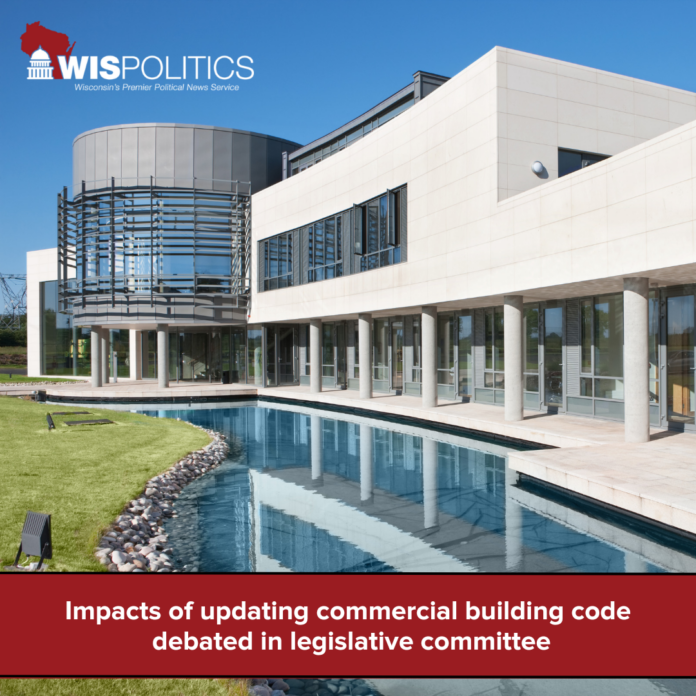— Updating Wisconsin’s commercial building code to reflect more current international standards and add efficiency requirements could increase or decrease building costs, depending upon whom you ask.
The code update would run the gamut on commercial building areas of design, such as wall insulation thickness, fire suppression systems, heating, ventilation and air conditioning, and how much space there is around toilets. The Department of Safety and Professional Services yesterday in the Housing and Real Estate Committee argued code additions improve building safety, worker safety and material standards.
Wisconsin would take up the International Code Council’s 2021 commercial building codes under the new rule. Wisconsin is currently on the ICC’s 2015 codes.
Keller Vice President of Architecture and Engineering Steve Klessig, who spoke alongside ABC Supply spokesperson John Schulze, said the updates would increase costs for metal-frame buildings, a popular manufacturing facility design, by about 15 percent.
“One of the reasons that it’s so popular in industrial parks is that, for Wisconsin businesses, it’s an affordable building type,” he said. “Under the new ’21 codes, it’s going to be very difficult for a building like that to meet the current codes.”
The update would also require special inspectors for larger projects that most local building inspectors are not as well-equipped to handle.
Klessig questioned, “To what extent do we need an additional bureaucracy to regulate our buildings when we have all of these tiers already existing in our state?”
American Society of Heating, Refrigerating and Air-Conditioning Engineers Fellow Mick Schwedler argued the changes would actually create an $800,900 energy savings in the first year and $340 million over the next 30. It would also make buildings more resilient to extreme weather events, he added.
“The positive effects from an economic standpoint of this code update would include the creation of jobs in construction and related industry, as well as lower utility bills for customers, tenants and businesses,” he said.
Schwedler also pointed out builders and developers could tap into more federal funds from the Inflation Reduction Act if the code updates go through. Mid-rise developments, buildings between four and 12 stories, would see a $1 per square foot reduction in construction costs, he said.
Republican lawmakers also raised concerns about the “nanny state” government trying to control every aspect of building construction to make it perfect.
Co-chair Rob Brooks, R-Saukville, said in his roughly 10 years in office he’s never had a constituent call asking to update building codes, but he’s gotten hundreds of calls seeking clarification on rules or complaining about building delays.
“Then you’re starting to increase turning radius by 10 percent in the bathrooms, you start raising the cost of a bathroom at a commercial building, and all of that goes up,” he said. “So all of those things pile up.”
Brooks, who is a realtor, added increasing costs by just 1 or 2 percent could destroy a commercial building’s viability.
Rep. Jodi Emerson, D-Eau Claire, said she knows Wisconsin is especially concerned right now with keeping building costs down, “But when we’re talking about building codes, regulation also equals safety.”
Gov. Tony Evers last month signed into law a workforce housing package that sets aside more than half a billion dollars for affordable housing development loans to help reduce the state’s housing shortage.
Emerson brought up the 1981 Hyatt Regency collapse that killed 114 people and 216 others due to engineering and maintenance issues.
“What is the cost of all those lives that were lost? What was the lawsuit, but not only that, what’s the human cost? And I’m sure none of the contractors would want to have something like that on their resume,” she said.
The energy efficiency side also impacts safety and living costs as the globe experiences more extreme weather events and the hottest days on record, she added.
Watch the hearing:






